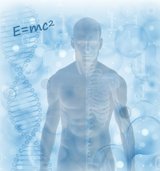Vaccination and Drugs
Is Your Baby Getting Too Much Aluminum?
AN ARTICLE PUBLISHED BY THE NATIONAL VACCINE INFORMATION CENTER.
Aluminum is a metal that seems harmless. We wrap our food in it, cook with it, and swallow aluminum in food and water every day since it occurs naturally in the environment. There is aluminum in breast milk and even more in baby formula. And aluminum is harmless, unless it gets into our bloodstream and finds its way to our brain. Because aluminum is a neurotoxin, and, like mercury and lead, it kills brain cells. This heavy metal has been implicated in autoimmune problems and neurological disorders (like Alzheimer’s), and is particularly toxic to the developing brains of young babies.
Fortunately, most swallowed aluminum passes harmlessly out through our intestinal tract. But what happens to aluminum that is injected directly into our body? Research tells us that most injected aluminum gets eliminated through the urine, but some deposits in our bones and brain, especially if we get too much aluminum all at once. So why would this neurotoxin be allowed in so many medical treatments, including most vaccines given to babies? Aluminum is added as an adjuvant, which means it’s designed to help certain treatments work. But is it actually safe?
There are only two research studies published decades ago that measured the elimination of injected aluminum in humans. One study involved only one person, and the other tested aluminum in six adults over a five-day period. 30% of the heavy metal remained in their bodies by the end of the study. Since then, aluminum research has been restricted to animals because it is now considered too toxic to study in humans. And ALL animal research has demonstrated that aluminum is toxic to the brain, bones, and the immune system.
Additionally, in 1997 doctors discovered that hospitalized premature babies being fed through IVs were unknowingly receiving 50 micrograms of aluminum each day, which impaired their neurological and mental development. They published their findings in the New England Journal of Medicine. Since that time the FDA has required warning labels on IV solutions and medications and put a limit of 25 micrograms on every IV feeing bag used in hospitals. But there was one medical treatment that was excluded from this FDA regulation—vaccinations.
What would you say if you found out that almost every baby in America receives up to 1225 micrograms of aluminum in vaccines at every infant check up? That’s 50 times the FDA safety limit, and it happens three times in just the first six months. Even at birth, all babies get 10 times the FDA safety limit of aluminum in one hepatitis B shot.
Vaccine manufacturers use a lot of aluminum, but no research has ever proven that vaccine aluminum is safe for babies. The strongest argument defending aluminum in vaccines comes from the Vaccine Education Center at the Children’s Hospital of Philadelphia (CHOP), where some vaccines are made. The Center claims there is no cause for concern because we eat and drink far more aluminum than we ever get in vaccines. But CHOP ignores the fact that swallowed aluminum does not enter the bloodstream, whereas all of injected aluminum does. They also assert that since we’ve been using it in vaccines for over 70 years, it must be safe; however, as we all know, mercury and lead used to be considered safe too.
All scientific and government regulatory agencies state that aluminum is toxic to the brain. So why is aluminum not being regulated in infant vaccines? Shouldn’t we prove aluminum is safe before giving it to every baby in so many doses? And if a large dose is undeniably toxic to developing brain cells, isn’t even a small dose a cause for concern?
Asking questions about vaccine safety doesn’t make you anti-vaccine.
References:
[1] FDA Code of Federal Regulations Title 21, subchapter C, part 201, subpart G, section 201.323 – Aluminum in Large and Small Volume Parenterals Used in Total Parenteral Nutrition (the original FDA guidelines that established the 25 mcg limit for aluminum).
[2] FDA Code of Federal Regulations Title 21, subchapter F, part 610, subpart B, section 610.15 (a recent addition to Title 21 that placed an 850 mcg aluminum limit on all individual vaccines, which happened to be the highest amount in any vaccine yet made).
[3] Aluminum neurotoxicity in preterm infants receiving intravenous feeding solutions. Bishop NJ, et al., New England Journal of Medicine 1997; 336(22):1557-61.
[4] Aluminum toxicity in infants and children. Committee on Nutrition, American Academy of Pediatrics, Pediatrics 1996; 97:413-16.
[5] ASPEN statement on aluminum in parenteral nutrition solutions. Charney P., Aluminum Task Force, Nutrition in Clinical Practice 2004; 19:416-17.
[6] FDA. Vaccine Package Inserts for aluminum-containing vaccines: DTaP, Hepatitis B, Hepatitis A, Pneumococcal, Hib (PedVaxHib brand), HPV, Pentacel, and Pediarix.
[7] Children’s Hospital of Philadelphia. Vaccine Education Center website: Vaccine Ingredients – Aluminum.
[8] The biological behavior and bioavailability of aluminum in man, with special reference to studies employing aluminium-26 as a tracer: review and study update. Priest ND, J Environ Monit. 2004 May;6(5):375-403
[9] Aluminum vaccine adjuvants: are they safe? Tomljenovic L, Shaw CA, Curr Med Chem. 2011;18(17):2630-7.
[10] Aluminum in the central nervous system (CNS): toxicity in humans and animals, vaccine adjuvants, and autoimmunity. Shaw CA, Tomljenovic L, Immunol Res. 2013 Jul;56;(2-3):304-16.






